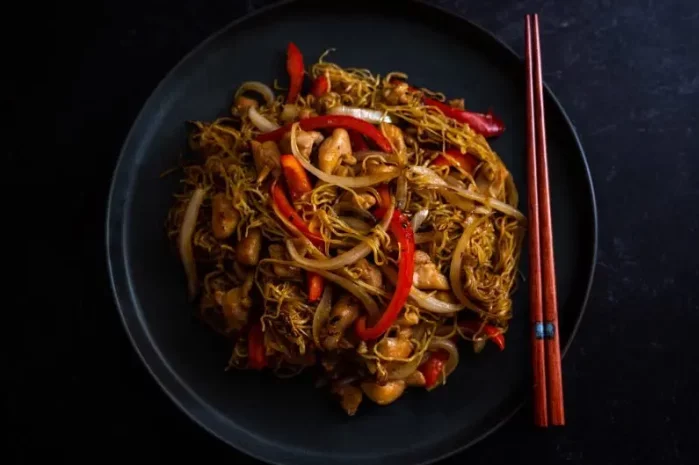Chinese cuisine, known for its diverse flavors, intricate cooking techniques, and vibrant colors, often leaves us with leftovers that are too delicious to discard. Whether it’s a hearty stir-fry, a delicate dumpling, or a rich noodle dish, reheating Chinese food can be tricky. Done incorrectly, the food can lose its texture, taste, and overall appeal. But worry not! With the right methods and a bit of care, you can enjoy your leftover Chinese meals as if they were freshly cooked. Here’s a comprehensive guide on how to reheat Chinese food perfectly.
Understanding Chinese Food Types
Before diving into reheating techniques, it’s crucial to understand the various types of Chinese food and their unique characteristics. This will help you choose the best method for each dish.
Stir-Fries and Fried Rice: These dishes are typically high in oil and can become soggy if not reheated properly.
Noodles and Rice Noodles: These can turn mushy if overheated or reheated in too much moisture.
Dumplings and Buns: These require careful handling to avoid a soggy exterior or dry interior.
Soups and Stews: These need gentle reheating to maintain their flavor and consistency.
Meat and Seafood Dishes: These can dry out easily, so retaining moisture is key.
General Tips for Reheating Chinese Food
Use the Right Equipment
- Microwave: Quick and convenient for small portions.
- Oven: Ideal for larger dishes that benefit from a bit of browning.
- Stovetop: Perfect for soups, stews, and stir-fries that need controlled heat.
- Toaster Oven: Great for individual servings of dumplings, buns, and small stir-fries.
Avoid Overheating
Overheating Chinese food can make it dry, rubbery, or overly greasy. Always reheat to just below the boiling point and check frequently.
Covering
Use lids or microwave-safe covers loosely to trap steam but allow some evaporation, preventing soggy food.
Specific Reheating Methods
Method: Stovetop or Microwave
Stovetop: Heat a non-stick pan over medium-high heat. Add a small amount of oil (if the dish isn’t already oily). Pour in the stir-fry or fried rice, stirring constantly. This helps to redistribute the heat and prevent burning.
Microwave: Place the food in a microwave-safe bowl. Cover loosely with a microwave-safe lid or paper towel. Microwave in short intervals (30-60 seconds each), stirring between intervals to prevent hot spots.
Tips: Add a splash of soy sauce or a drizzle of sesame oil to freshen up the flavor. Avoid using the microwave if the dish contains a lot of sauce, as it can splash out.
Noodles and Rice Noodles
Method: Stovetop
Boil a pot of water (or use a steamer).
Place the noodles in a heatproof colander or steamer basket.
Steam or blanch for 1-2 minutes, until heated through. Drain well to avoid excess moisture.
Alternative (Microwave): If you prefer, you can microwave noodles in a single layer on a microwave-safe plate. Cover loosely and microwave in short intervals, stirring frequently.
Tips: Toss the noodles with a bit of oil or sauce to prevent sticking and to enhance flavor.
Dumplings and Buns
Method: Toaster Oven or Oven
Preheat the toaster oven or oven to 350°F (175°C).
Place dumplings or buns on a baking sheet. You can add a splash of water to the bottom of the sheet to create steam, helping to keep the exterior soft.
Heat for 5-7 minutes, or until warm and slightly crispy.
Alternative (Steamer): If you have a steamer, you can steam the dumplings or buns for 3-5 minutes until heated through.
Tips: Avoid overcooking, as this can make the dough tough. A quick toast in the oven can also give the exterior a nice crunch.
Soups and Stews
Method: Stovetop or Slow Cooker
Stovetop: Pour the soup or stew into a pot. Heat over medium-low heat, stirring occasionally. Avoid boiling, as this can break down the flavors and textures.
Slow Cooker: Place the soup or stew in the slow cooker. Set to the lowest heat setting and let it warm through for 1-2 hours.
Tips: Add fresh herbs or a squeeze of lemon juice to brighten up the flavors. If the soup has separated, a quick whisk can help reincorporate the fats and broths.
Meat and Seafood Dishes
Method: Oven or Stovetop
Oven: Preheat to 325°F (165°C). Place the meat or seafood dish in an oven-safe dish. Cover with foil or a lid and heat for 15-20 minutes, until warm. Uncover for the last 5 minutes to brown the top, if desired.
Stovetop: Heat a skillet over medium heat. Add a small amount of oil. Place the meat or seafood dish in the skillet and cook, stirring occasionally, until heated through.
Tips: Add a bit of broth or sauce to keep the meat or seafood moist. Avoid overcooking, as this can dry out the proteins.
Conclusion
Reheating Chinese food doesn’t have to be a challenge. By understanding the unique characteristics of different dishes and using the right techniques and equipment, you can preserve the flavors, textures, and freshness of your leftover Chinese meals. Remember to avoid overheating, use the right covering, and choose the method that best suits your dish. Whether you’re reheating a simple stir-fry or a complex multi-course meal, with these tips, you’ll be able to enjoy your leftovers as if they were freshly prepared by a master chef. So next time you have leftover Chinese food, don’t hesitate to give these reheating methods a try. Your taste buds will thank you!
Related Topics:



























